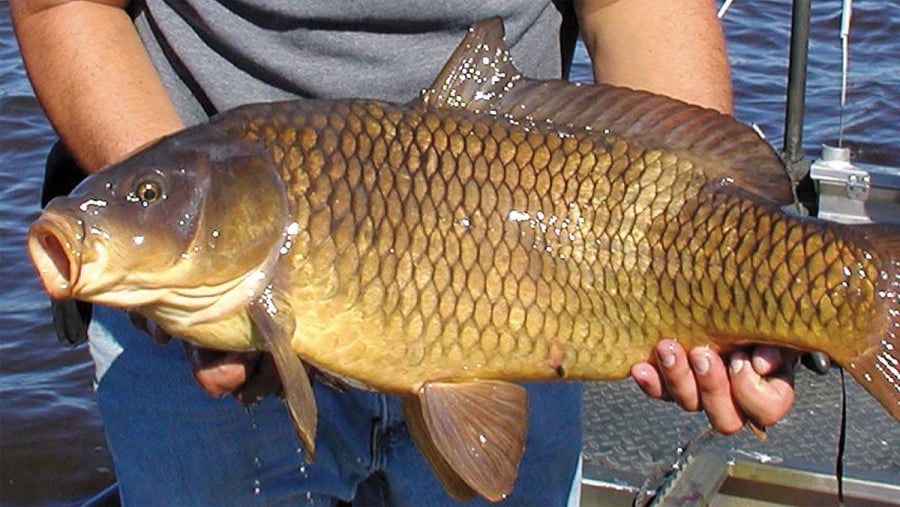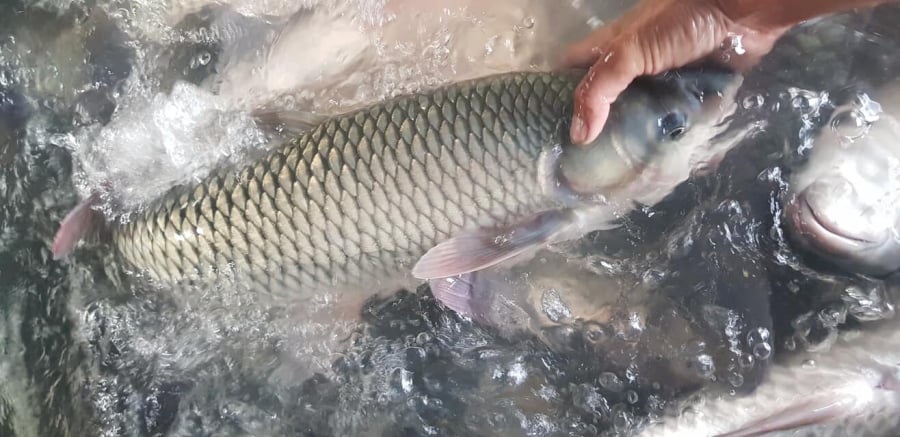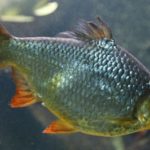Fish is a nutritious food source that can be used to make many delicious and affordable dishes, making it a common component of Vietnamese family meals. In particular, there are 8 large and nutritious fish species in nature, which are both delicious and affordable in Vietnam. If you come across them at the market, be sure to buy them to improve your family meals.
1. Carp

Carp has long been used by many Vietnamese people to cook family meals because it is both delicious and nutritious. Each part of the carp has its own uses, such as: carp meat helps treat flatulence, carp eyes are used to treat open wounds, carp bile helps treat red eyes, and carp fat is used to treat children’s illnesses, etc. By combining carp with other ingredients, you can create incredibly nutritious meals.
In traditional medicine, carp has a sweet and neutral taste, with high levels of protein and vitamins. It has the ability to treat coughs, asthma, promote milk flow, diuretic effects, improve appetite, and aid digestion. For people with water retention, watery diarrhea, jaundice, frequent urination, edema during pregnancy, they should include carp in their diet.
2. Snakehead fish
Snakehead fish are freshwater fish that are commonly found in rural areas and are sold very cheaply. Snakehead fish contains protein, calcium, potassium, magnesium, selenium, fatty acids, and many other nutrients.
Not only that, snakehead fish meat is soft and easy to digest, making it suitable for children, the elderly, and those with poor digestion. It also has the ability to supplement blood and is good for the stomach.
To have the perfect braised snakehead fish dish, housewives in the countryside have to wake up early and wait for the fishermen to bring back live fish in the early morning. Snakehead fish can be as small as a pinky finger and the largest one is only as big as a thumb, not fatty, and does not have much meat. However, with the skillful cooking hands of the women here, snakehead fish becomes the most delicious dish on rainy and cold days at the end of the year.
3. Catfish

Catfish is a less fishy type of fish to eat, it is very delicious, has white meat, and is one of the easiest fish to catch. Catfish is also known for its high Omega-3 content, which is an essential fatty acid that plays an important role in the development of the brain, enhances brain health, is good for the heart, and helps regulate blood pressure.
In addition, catfish is a food that provides very good vitamin D for the body. Vitamin B6 and potassium in catfish play an important role in the activities of your nervous system. They also help nourish the nervous system.
4. Tilapia fish
Tilapia fish is a cheap and nutritious fish. In 100g of tilapia fish meat, there are 15.3g of protein, 2.2g of fat, 82mg of calcium, 18mg of phosphorus, 0.8mg of iron, 229mg of potassium, 4.7g of carbohydrates, and vitamins B1, B2; 2.8mg of niacin; 2.65mg of vitamin E.
According to traditional medicine, tilapia fish has warm properties, sweet taste, and is good for people with headaches, dizziness, blurry vision, coughing, high blood pressure, kidney deficiency, back pain, joint pain, weak tendons, poor digestion, limb edema, and taste deficiency.
5. Tilapia fish
Tilapia fish is a familiar and nutritious fish that contains many vitamins and minerals such as Omega-3 fatty acids, protein, vitamin B6, vitamin B12, selenium, phosphorus, potassium, niacin, and pantothenic acid.
What’s special about this fish is that it contains a lot of protein but very few calories and fats, and it has the lowest mercury level among all fish species.
100g of tilapia fish contains 26g of protein and only 2g of fat. Therefore, it is a suitable fish for children over two years old, pregnant women, and breastfeeding mothers.
6. Grass carp

Grass carp is an inexpensive fish, but it is very rich in vitamins B (such as B1, B2), niacin, unsaturated fatty acids, calcium, iron, zinc, phosphorus, selenium, which have a warming effect on the stomach and liver.
Dishes made from grass carp are suitable for people with high blood fat, poorly developed children, swollen joints, pyogenic lung, low milk production in women, etc. In addition, this fish has the effect of brightening the eyes, so people with weak physical strength, loss of appetite should also include this type of fish in their diet.
7. Indian mackerel
Indian mackerel, especially white Indian mackerel, is very delicious and nutritious. In 100g of mackerel meat, there is 75.2g of water, 19.4g of protein, 185mg of phosphorus, 0.6mg of iron, 145mg of sodium, 263mg of potassium, 27mg of vitamin A, 2mg of vitamin PP, 1mg of vitamin C, B1, B2, 5.4g of fat, 1.1g of ash, 15mg of calcium, providing 126kcal.
Moreover, mackerel is rich in omega-3 and beneficial protein for health. The omega-3 fatty acids in mackerel can reduce bad cholesterol levels, have anti-inflammatory effects, improve heart function, and prevent certain cardiovascular diseases.
8. Catfish
Catfish not only contains many nutrients, but also has omega-3 fatty acids that can relieve joint pain, reduce inflammation and infection. Catfish is also low in fat and cholesterol compared to other meats, so it can help reduce cholesterol levels in the blood, thereby enhancing the immune system when consumed regularly.




































